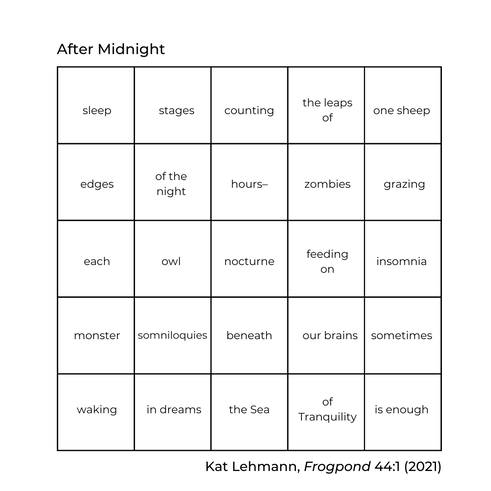sudo-ku, a multi-haiku form
Sudo-ku is a multi-haiku form created by Kat Lehmann in 2020. Sudo-ku can be read horizontally and vertically (and possibly other directions) like a sudoku puzzle to create multiple interwoven poems. As sudo-ku have a theme, they have a title that is non-redundant with the haiku. Enjoy exploring the possibilities!





